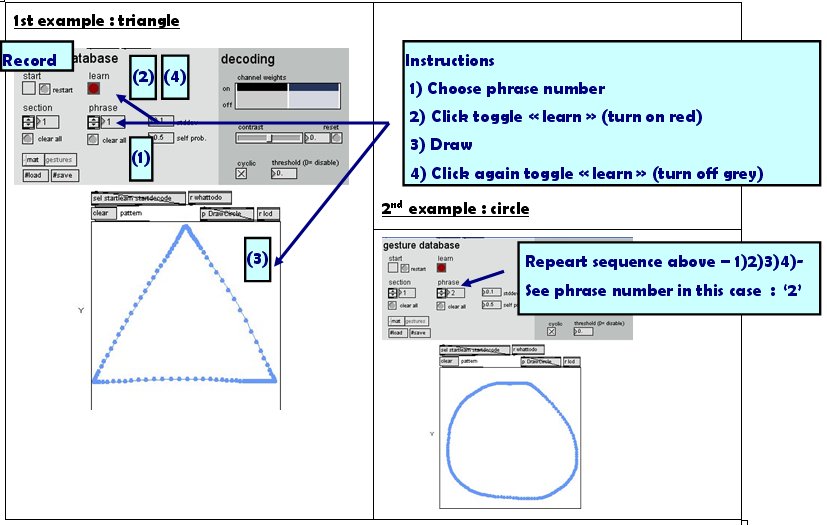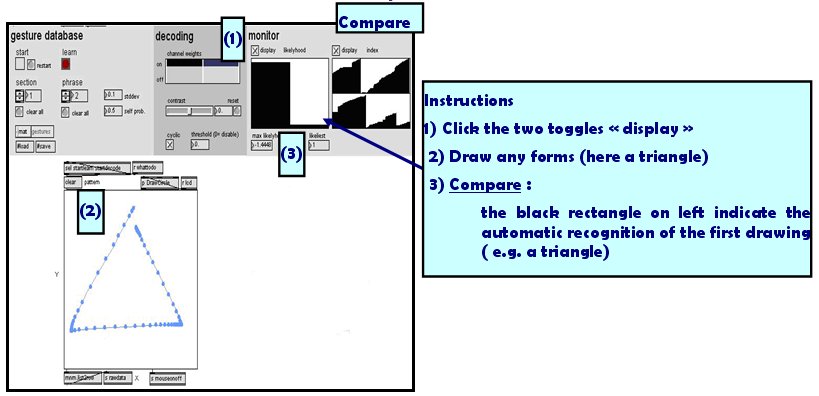(→Description) |
|||
| Line 1: | Line 1: | ||
| − | === | + | === What is "the gesture follower" ? === |
| − | The ''gesture follower'' is a set of Max/MSP modules integrated in the toolbox MnM of the library FTM. The | + | The ''gesture follower'' is a set of Max/MSP modules to perform gesture recognition and following in real-time. It is integrated in the toolbox MnM of the library FTM (see dowload). The general idea behind it is to be able get parameters by comparing a performance with an ensemble of prerecorded examples. |
| + | |||
| + | The gesture follower can guess the two following questions: | ||
| + | * which gesture is it ? (if you don't like black and white answers, you can get "greyscale" answers: how close are you from the recorded gestures ? ) | ||
| + | * where are we ? (begining, middle or end ...) | ||
| + | |||
| + | === What is a "gesture" anyway ? === | ||
| + | |||
| + | A gesture here can be any ''temporal curve'', sampled at relatively low frequency compared to sound. Typically, from 1000 Hz to 0.001 Hz. | ||
=== Documentation === | === Documentation === | ||
Revision as of 18:52, 6 November 2007
Contents
What is "the gesture follower" ?
The gesture follower is a set of Max/MSP modules to perform gesture recognition and following in real-time. It is integrated in the toolbox MnM of the library FTM (see dowload). The general idea behind it is to be able get parameters by comparing a performance with an ensemble of prerecorded examples.
The gesture follower can guess the two following questions:
- which gesture is it ? (if you don't like black and white answers, you can get "greyscale" answers: how close are you from the recorded gestures ? )
- where are we ? (begining, middle or end ...)
What is a "gesture" anyway ?
A gesture here can be any temporal curve, sampled at relatively low frequency compared to sound. Typically, from 1000 Hz to 0.001 Hz.
Documentation
Examples
Links
Download
Tutorial Workspace : overview
Get an overview of the interface functions.

1st STEP : Record gestures
Let’s start with two simple drawings : a triangle and a circle.

2nd STEP : Compare
Draw a figure and then see how similar it is with your two referent drawings.

3rd STEP : Observe
Pay attention to the curves below. They represent the velocity in X and Y axis of the mouse trajectories. That give a useful temporal information on how you realize your drawing.

Connection Avec EyesWeb XMI
EyesWeb XMI, the open platform for real-time analysis of multimodal interaction, can be connected to Max/Msp throughout the OSC protocol (Open Sound Control). OSC is open, message-based protocol which was originally developed for communication between computers and sythesizers (cf. wiki).